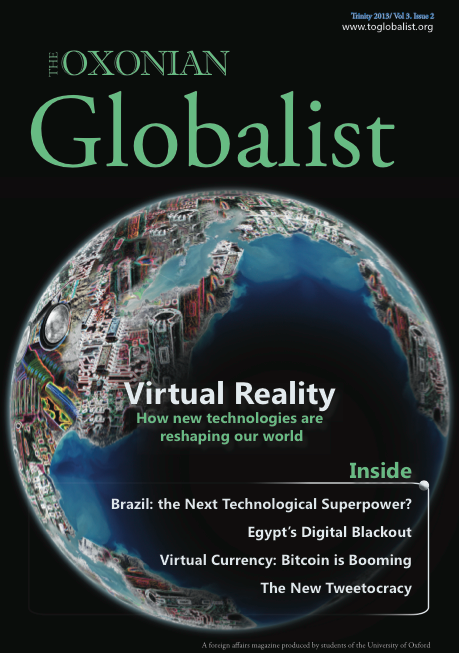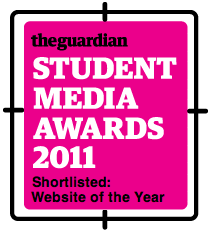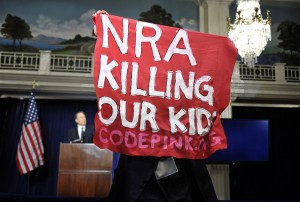On January 16th, little more than one month after the now infamous Sandy Hook shootings, President Barack Obama announced an extensive programme to tighten gun control policy in the United States. Obama called for a ban on assault weapons and the high-capacity magazines fed into these guns. Among the 23 Executive Orders launched by the President was a commitment to launch a national dialogue on mental health and to establish a responsible gun ownership campaign.
All this is commendable work, but one word was missing from Obama’s speech: “handgun.” What this really speaks for, more than some bizarre ignorance on the part of the President, is the state of division in the United States. As it does in so many other controversial policy areas, this divisiveness renders Obama hamstrung in his efforts to strengthen gun control laws.
Never was this division more clear than in the days after the shootings at Sandy Hook elementary school in December 2012. President Obama, tears heavy in his eyes, withheld from converting grief into political capital. Yet his hesitance fuelled the explosive debates emerging on the nation’s television networks. Chris Matthews, the host of Hardball – a popular talk show on left-leaning network MSNBC – immediately came forward and said “Why can’t Congress [regulate] semi-automatics? I know we’ve got millions of them… Can’t we start to regulate?” Keith Olbermann, a former anchor for MSNBC, tweeted in the hours after the shootings, “The Columbine discussion we deferred? When do we have that discussion? The Giffords discussion? Portland Mall? Aurora Movie Theater? When?”
Just as these commentators called for at least marginal efforts to strengthen gun control, their right-wing counterparts swung into motion. Ann Coulter, a conservative political commentator, claimed that “only one policy has ever been shown to deter mass murder: concealed-carry laws”. Meanwhile Glenn Beck of Fox News declared, “Our communities are suffering and it is because of the ever-expanding lack of self control & personal responsibility.”
The American media is sharply divided in its attempts to understand the origins of the Sandy Hook massacre. Was it lax gun control laws? Was it constrictive gun control laws? Or was it a pervasive depravity spreading through American society? This war of words speaks for the divided, sensationalist nature of the American media.
The reactions of the American populace show a similar divisiveness. The calls of New York City Mayor Michael Bloomberg for immediate bolstering of gun control laws were criticised for being out-of-touch by people living in the central portion of America. In this region, sheer isolation can mean that a household lies at a distance of half an hour from the most rapid emergency services response. What makes sense in New York – a city so embroiled in crime, that a 24-hour period with no violent crime recently gave citizens a cause to celebrate – does not necessarily extend to rural Wyoming or Iowa.
This geographical dimension certainly leads to a natural division in opinions on gun control, but so too does the division between rich and poor. On a recent visit to my family members, while we looked out over Los Angeles, my grandparents admitted their shock at the staggering figures of gun use in the country. With 40% of Americans claiming that they currently owned firearms, as much as 70% of the population stated that they had used firearms in the past. Meanwhile, in the city below, approximately 1000 people die every year from gunshot wounds.
Obama might succeed in his bid to outlaw assault rifles, but handguns are the weapons of the gang warfare afflicting the ghettos of Los Angeles and other major cities. The failure of the President to include handgun restrictions in his proposals indicates not only a country that is divided geographically, but also a country divided by class, where the gun crime that does not make international headlines is quietly swept under the carpet. It is Sandy Hook that has brought the question of gun control to the forefront, but it remains to be seen what will come of its time in the limelight.
Nevertheless, signs of change are emerging. Gun buyback schemes have hauled more firearms in the wake of Sandy Hook, and an advertisement released by the National Rifle Association in the wake of Obama’s proposals has drawn heavy, bipartisan criticism. Condemned as “diabolical” by such left-leaning newspapers as the Washington Post, the advertisement was also attacked by powerful Republicans including New Jersey Governor Chris Christie, who called it “reprehensible”. This bipartisan outcry permits cautious optimism that America may yet rally around the issue of gun control, with the atrocities at Sandy Hook, coming after other mass shootings at Virginia Tech and in Aurora, Colorado, finally providing the critical mass for unification on an issue that sees around 30,000 people die every year.




